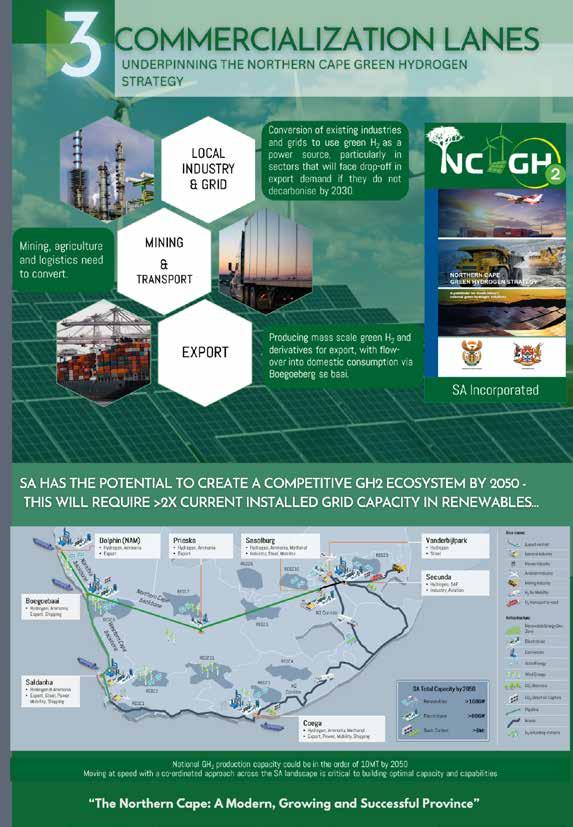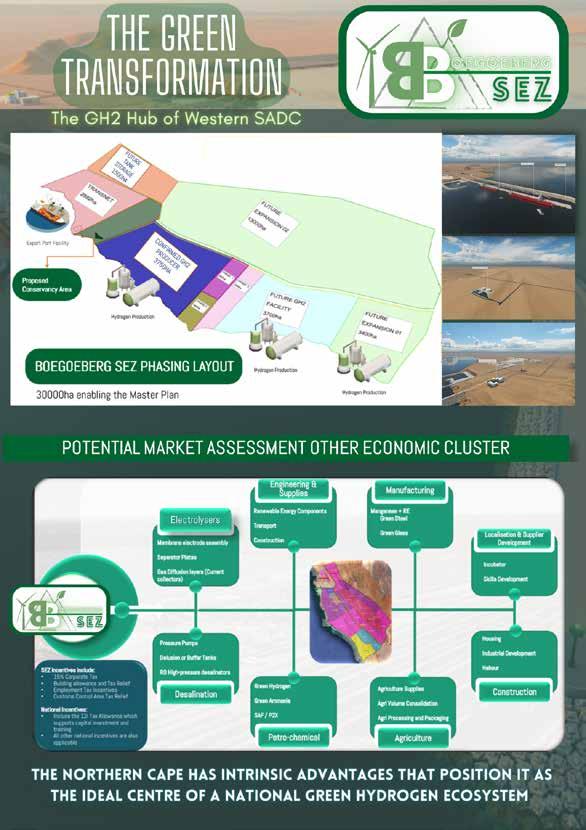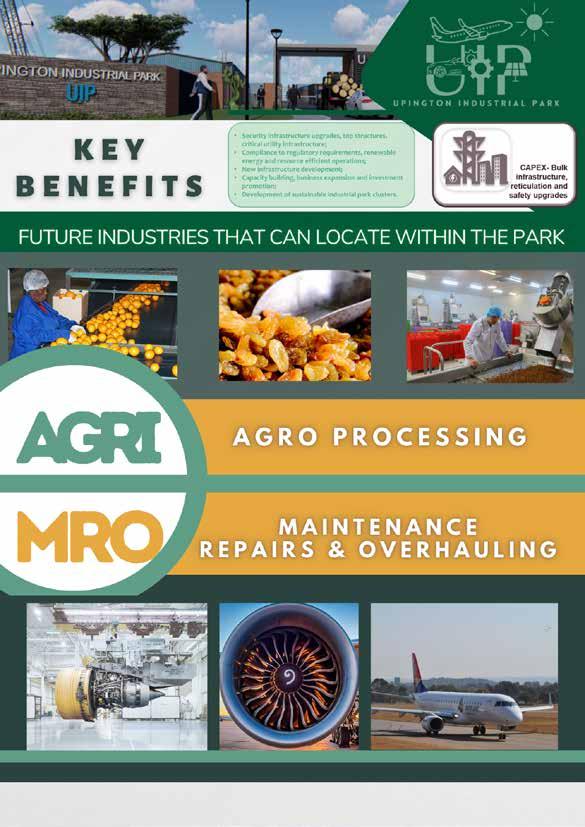
2 minute read
BACKBONE: SECTORAL CLUSTER HIGHLIGHTS
De Aar Renewable Energy
South Africa’s Renewable Energy Independent Power Producer Procurement Programme (REIPPPPP) has seen more than R200-billion committed to renewable energy projects. It aims to add some 13 225MW by 2025. Fully 60% of the projects so far allocated have been in the nation’s sunniest province. The biggest solar farm so far in South Africa is Solar Capital’s 175MW project at De Aar. Formerly famous as the railway junction, De Aar is becoming better known as a renewable energy hub.
Square Kilometre Array
The SKA will be the world’s largest radio telescope, made up of thousands of antennae throughout Australia and Africa, centred on the area around Carnarvon in the Northern Cape. South Africa’s own 64-dish MeerKAT telescope, which will form part of the SKA, started coming on line in 2016. The town of Sutherland already hosts an array of telescopes with a long history of providing scientists with excellent data in clear skies above the flat and dry Karoo.
Gamagara Corridor
Mining contributes 23.4% to the Northern Cape economy and makes up nearly 7% of South Africa’s total mining value. The mineral resource of the province is wide-ranging and impressive with significant deposits of iron ore, manganese, zinc, copper, lead, titanium, pig iron, zircon and gypsum. The overwhelming majority of the world’s manganese comes from the Postmasburg and Kalahari regions. The province is responsible for 25% of the world’s exports of the mineral. The Northern Cape produces more than 84% of South Africa’s iron ore and has two major iron belts, from Postmasburg to Hotazel, and running through Sishen and Kathu. Sishen is the most important iron-ore mine in South Africa, where operations include extraction and four beneficiation plants. The availability of natural resources, labour and infrastructure (including the Sishen-Saldanha railway line) make Sishen the ideal location.
Boegoebaai Bulk Corridor
Big plans are underway to develop a deepwater port capable of receiving large vessels at Boegoebaai. Preliminary research indicates that the project could generate income of R2.1-billion annually by handling bulk cargoes and minerals such as manganese and iron ore. There would be possibilities for linking the port to the gas fields and developing ship-repair facilities. The intention is to find a private investor or a consortium to take the project forward.
If the harbour project gets the green light, then accompanying infrastructure will follow. The best route to connect to Upington will be the subject of further studies, as will the feasibility of a new rail link. The construction requirements of a project this size would themselves be a boost to the economy of the Northern Cape.
Coastline
The Northern Cape boasts a coastline of 313km but the economic value of this asset has barely been touched, despite a growth in the abalone industry and some fishing and lobster operations. Plans to boost the maritime economy in the province form part of two broader national programmes. Operation Phakisa is an initiative of the South African government to fast-track parts of the National Development Plan. The focus is on delivery and results, with strict timelines. “Phakisa” means “hurry up” in Sotho. One of the focus areas within Phakisa is the Oceans Economy programme. Three Northern Cape harbours feature in the list of harbours that will be further developed: Port Nolloth, Boegoe Baai and Hondeklip Bay. The last-named port has already received investment in the aquaculture sector.













